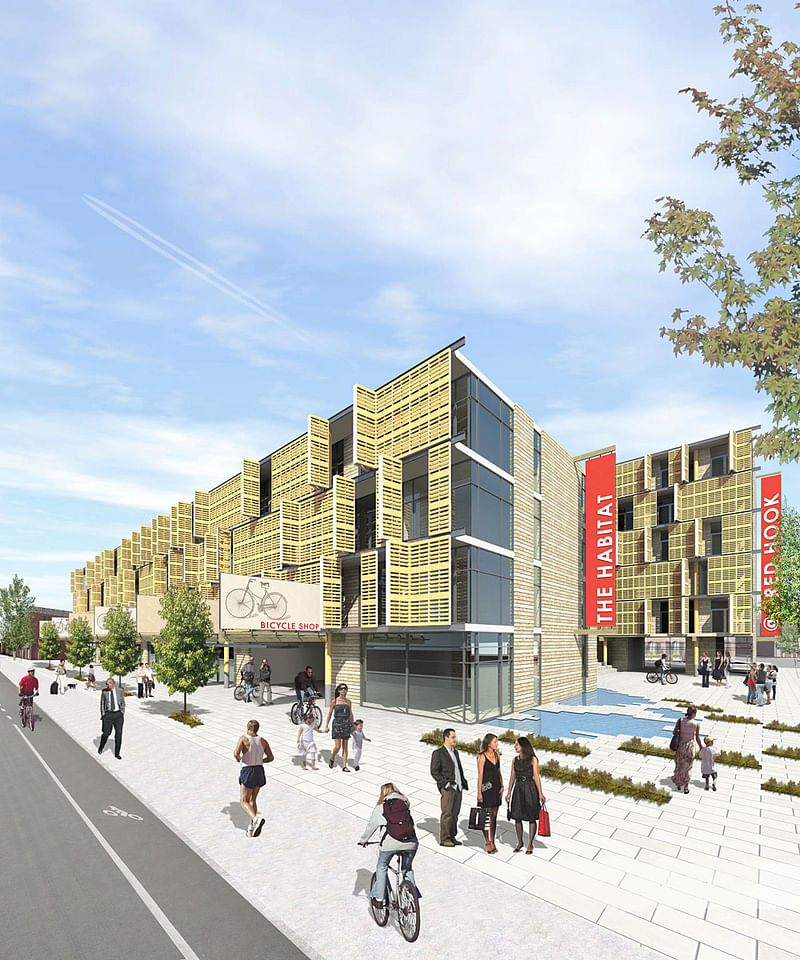TIMBER IN THE CITY Competition Entry by Samuel Pitnick
By Bustler Editors|
Wednesday, Jun 5, 2013

Related
Young LA-based architect Samuel Pitnick has shared with us his entry to the 2012-13 Association of Collegiate Schools of Architecture (ACSA) competition for architecture students and recent graduates. This year's competition, titled TIMBER IN THE CITY: Urban Habitats Competition, was a a partnership between the Binational Softwood Lumber Council, the ACSA and the School of Constructed Environments at Parsons The New School for Design.
TIMBER IN THE CITY challenged participants to design a mid-rise, mixed-use complex with affordable housing units, a job training/educational facility, a center for innovative manufacturing of wood technology, and a distribution center. The project site is in Red Hook, Brooklyn a neighborhood in some flux, cut off from much of Brooklyn geographically, yet increasingly vibrant.
Project Description from the Architect:
Set along the waterfront of Brooklyn’s Red Hook neighborhood, The Habitat provides a dynamic new mixed-use complex that will revive the area by activating the surrounding community and reinvigorate the manufacturing and housing sector, without compromising the unique identity of the area.
The Habitat at Red Hook contains 175 studio, one, two, and three bedroom affordable living units over ground floor commercial space aimed at providing new resources for residents and the neighborhood. Each prefabricated unit is constructed on a 12.5’ x 25’ module that is assembled on site in the wood and digital fabrication shops on the ground floor. Structural insulated panels (SIP’s) form the walls of the units which cuts down on fabrication time and offers thermal and acoustical insulation.

The prefabricated units are transported from the shop to the loading dock and hoisted into place by a crane. Glue laminated beams form a wood pedestal above the ground floor which supports the load of the units above. Assembling every unit on site saves time and money, reduces construction waste, and cuts down on carbon emissions by eliminating transportation demands. The vertical stair and elevator cores in the project are fabricated from cross-laminated timber (CLT) panels that reduce the weight of the overall structure.
The south facades of The Habitat are fabricated from recycled wood pallets that are normally discarded after being used to transport goods. These pallets form an operable façade, controlled by the residents, to provide each unit with varying degrees of sun shading and privacy throughout the day.

To maximize the efficiency on site, the wood and digital workshops were combined into a single entity on the ground floor. This allows for job training, education, and manufacturing to take place in one location along Van Dyke Street. The bicycle parking, storage, and workshops are located along Beard Street.
Due to the large programmatic requirements, there was risk of creating a building that overpowered the site and the surrounding low-rise buildings. To mitigate this problem, the massing of the project was divided and split into two “bars”. A four story and six story bar contain all 175 residential units. Stepping down the massing of the building to the south permits more natural light to enter the center of the site and the units to the north. An elevated public walkway, and resident gardens, which serve as an extension of the adjacent Red Hook Community Farms, transverse the site from east to west and connect the two bars of housing.

In 2012, Hurricane Sandy resulted in massive flooding and property damage to the neighborhood of Red Hook. In order to safeguard against future hurricanes and flooding, a conscious decision was made to elevate the wood construction off of the ground and provide concrete construction within the flood plane. Another precaution against future damage is the operable wood pallet screen on the south facing facades of the building which can be fully close in the event of a storm to prevent against property damage caused by flying debris.

Find more diagrams and plans of the scheme in the image gallery below.





Share
0 Comments
Comment as :